Straw Through Potato
Sometimes you have to stop and ask yourself, “Who comes up with this stuff?” No one ever uses a straw to eat a potato, but […]

What could be more fun than a potato launcher, a 14-pound sack of spuds, and a big cup of coffee? Learn about air pressure, force and motion and specifically Boyle’s Law.
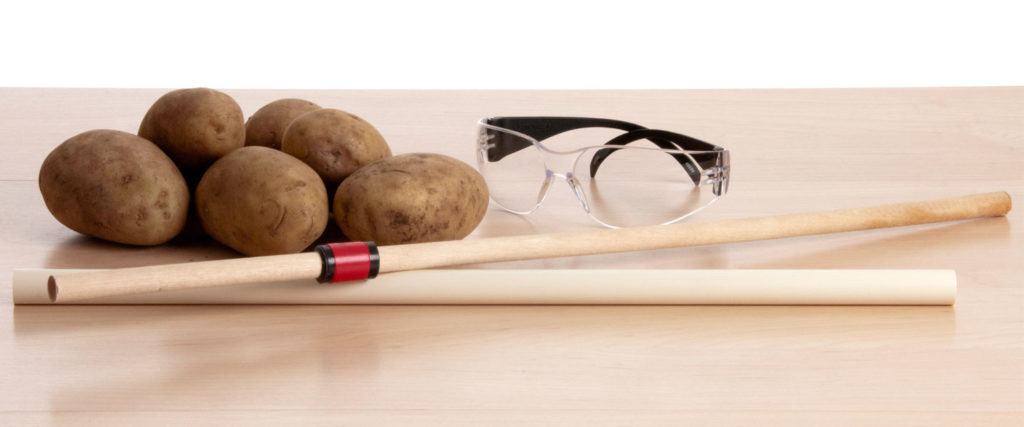
There are two parts to the potato launcher—the plunger (your dowel rod) and the PVC tube. Let’s start with the plunger. Form a stopper by wrapping a 12-inch strip of duct tape around the dowel rod approximately 6 inches from the end of the rod. The photographs show the best placement for the tape. Do not wrap any tape around the second dowel rod. You’ll use this rod as a way to push any remaining pieces of potato out of the PVC tube when you’re finished with the activity.

Now let’s move on to the PVC tube. Most versions of the potato launcher use opaque PVC tubing like the kind you would find at the hardware store. However, clear PVC tubing is available if you want to see what is happening inside the tube. Clear PVC is much more expensive than traditional opaque PVC, but it looks great. In order for a piece of potato to fit tightly in the tube, it’s necessary to flare both ends of the PVC pipe. One of the easiest methods for doing this involves an electric drill and a cone-shaping grinding stone, but if you don’t have these tools, use a knife to flare the edges with the help of an adult. Use care as the ends of the tube can be sharp or have rough edges.
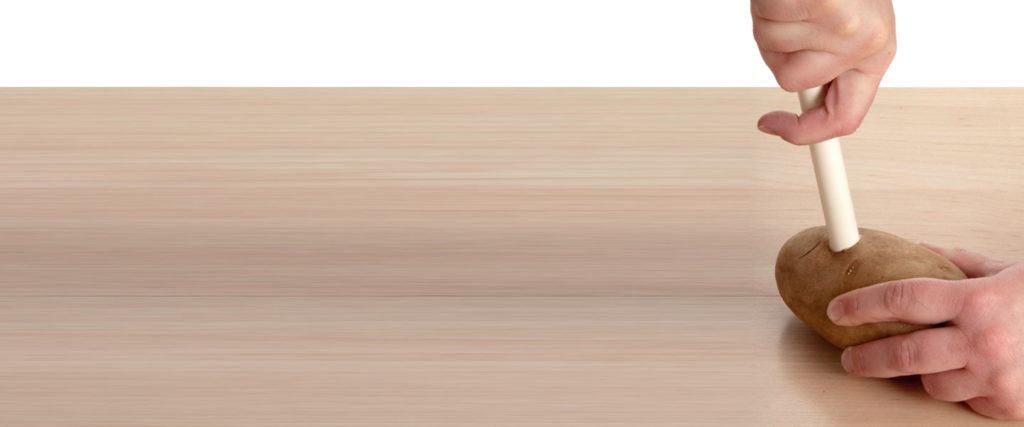
Let’s not forget about the potato. Place the potato on a flat surface. If the potato is very thick, you might want to cut it in half lengthwise. Hold the potato securely with one hand while pushing the end of the tube through the potato with the other hand. Pull the tube out of the potato to see your “potato plug.” (The sharpened, flared edges of the tube should help cut through the potato.)

Hold the plunger (dowel rod) with your hand behind the stopper you made out of duct tape. Use the plunger to move the piece of potato to the other end of the tube (the tape stopper will actually position the potato plug a few inches from the other end). The photograph of the clear PVC tubing shows the proper positioning of the potato plug. Always keep your pushing hand away from the sharp edge of the tube and positioned behind the tape stopper. Remove the plunger.
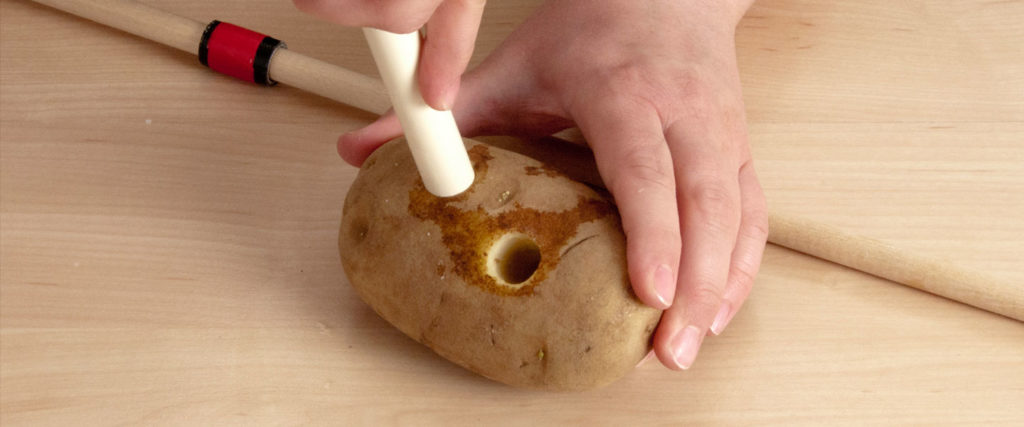
The reason for moving the potato plug is to free up the end of the tube to accept another piece of potato. Position the potato securely on a flat surface while pushing the flared edges of the empty end of the tube into the potato again. Now both ends of the potato tube are plugged.
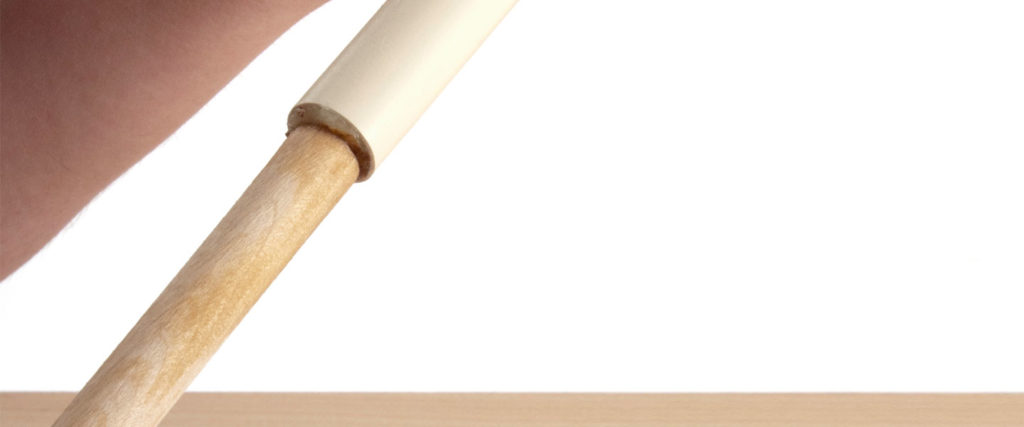
Assuming that you’re right handed, hold the plastic tube in the middle with your left hand and the plunger in your right hand. The plunger will go into the end where the first potato plug is a few inches from the end of the tube.
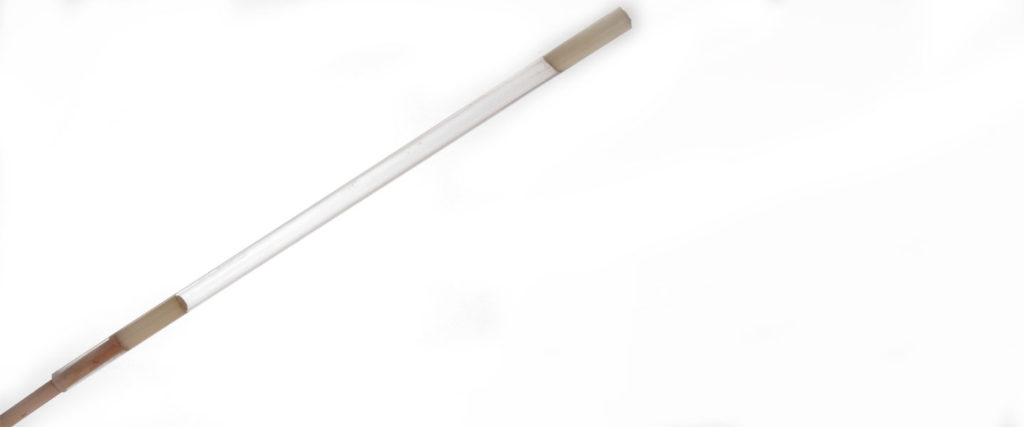
Push upward with the plunger on the bottom piece of potato until the top potato piece pops out of the tube. POW! Because of the placement of the duct tape stopper, the bottom potato should now be positioned a few inches from the top of the tube, and the bottom end of the tube is ready to accept another unsuspecting piece of potato.

It takes the average potato-launching science enthusiast about thirty launches before feeling completely confident about the mission. Never aim the flying potato at anyone. It’s best to do this demo outside, away from all forms of life. Remember, this is a science demonstration, not a bombing mission. Use caution when demonstrating your newly acquired skill.
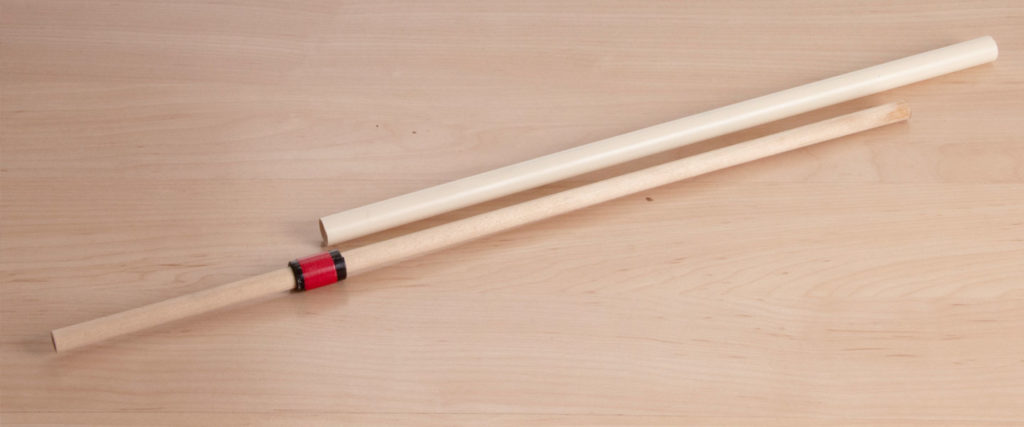
When you are finished, use the second dowel rod without the duct tape stopper to carefully push the remaining potato plug out of the tube. Wash and rinse the tube and the plunger with mild soap and water.
The potato gun beautifully illustrates Boyle’s Law, which states that pressure and volume are inversely proportional. In other words, as you decrease the volume of the air trapped in between the two pieces of potato, the pressure exerted by the air increases. This increase in pressure eventually forces the potato at the top end to exit the tube with great pizzazz!
Perform this demonstration outside or in a large room. Warn members of the audience that a projectile potato might be coming their way. Wear safety glasses. If you are using the official Potato Launcher from Steve Spangler Science you should use care when handling the flared end of the tube, as the edges may be sharp. We also recommend adult supervision.
This science demonstration only uses the power of compressed air to demonstrate Boyle’s Law, unlike other “potato guns” which use flammable liquids to create an explosion to launch the potato. Flammable liquids guns are not recommended!
For many years Steve Spangler manufactured the potato gun that he used during his teacher workshops. If you have one of those launchers, here are the downloadable instructions.